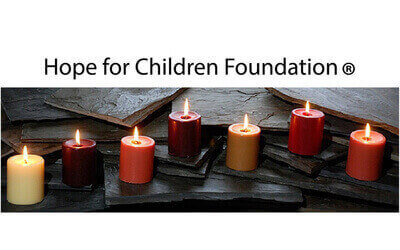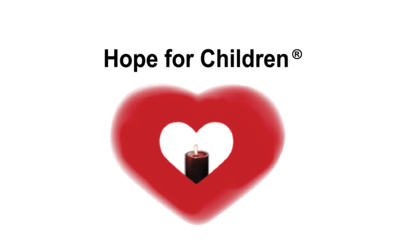Expand the Circle: Reach All Victims Video
This emphasizes the importance of inclusion in 2018 crime victims services.
First, A Few Words from Hope for Children Foundation
By expanding knowledge awareness, one strengthens oneself. So please watch movies free online, and online free videos hosted on our Website. We are all about giving people direction and love. After you review this 2018 Public Service Announcement, please place the following URL addresses into your browser to watch many more free online movies and free online videos. (1) https://hopeforchildrenfoundation.org/movies/
(2) https://hopeforchildrenfoundation.org/training-videos/
Hope for Children Foundation board of directors state, “We care for you and your family, your voice is important to us. You will learn many ways we care for you. We are here if you need us now. Knowing someone cares for you can be just what you need to get through the next day. Having your best interest at heart can be life saving to child abuse victims or a victim of crime.”
“Hope for Children Foundation invites you to be a part of a children’s answer, together be their dream team. Loving children as survivors may not be easy although it’s necessary for children to recover from abuse. Those recovering from child abuse need our help. So get involved, help victims of crime, expand the circle of love, and just tell children to get ready, a better future is on the way. Child abuse help is here to stay. Learn about the many ways to prevent child abuse. Let’s experience and learn to be significant in this lifetime, with loving children as a priority.”
Magical Relationships
You may have first hand experience by finding out in life that real magic is in a relationship. What a wonderful thing to discover. This special magic has brought people together all over the nation through a safe connection. Share the magic please, join us, help reach out and up. Be happy about helping others and expanding awareness. There is no need to suffer or feel isolated, not now, in this day and time. Do you feel isolated and fearful? Do you feel hated and rejected? Do you suffer with guilt? Do you feel you are blamed? Do you know domestic violence victims? Watch online movies free to help you become all you can be, check out our Website to watch free movies online. Abuse does not mark your identify, you are so much more than that. Well, this might not be what you want to hear, but you have probably heard it before, don’t worry be happy. Start your smile on your face today, then try to enjoy our online movies free. The movies will explain how to get help through a victims assistance program. Just so you know Hope for Children Foundation was established in 1998, for the prevention of cruelty to children, we are considered by many a child abuse organization, for its prevention.
Generations ago no victim help, nor advocate voice could be found close by, big changes in state services have since occurred. Now most states have multiple areas to give help to victims of crime. Many great victims rights are available and we want you to get the help should you want or need it. Crime victims compensation is a tremendous help with victim benefits, to lend a hand, and helping victims. Go to our Website and learn to connect with the right resources and services for you and your family. We promise those actions will make a difference in your life for the better. We want you to experience positive things in life from now on. Part of that experience includes helping others, when you are ready to help others, just let us know. You might be surprised about how much you can impact the life of a child and feel happy about your successes.
You will soon realize child abuse charities help kids be stronger today. The best children’s charity puts children first. Learn how together, we can help children be stronger with the right kind of love and support. We believe you will soon experience the overwhelming meaning of children living in safe and loving environments, and in a healthier community. Do you have what it takes? We believe you do.
We are interested in people building partnerships with us. Hope for Children Foundation believe trust and reliability are important elements of a partnership. The best charities to give to should also have these elements present in the day to day management and operation, as Hope for Children Foundation does. We depend on these partnerships to help children. In building great partnerships we are busy lifting up programs that work.
Many people are amazed at how far we have come. We have accomplished many good things for the benefit of children and their families. We are very grateful to the children, their families, volunteers and the many people who have helped us achieve great things over the years. We all want to show the winning ways of love for children and their families. So we ask you again to help this national movement to help stop child abuse. No longer are victims of child abuse, and of other crime an afterthought with the criminal justice system. Many heroes have come forward through the years to make great changes. We are not finished yet. We need more brave heroes until abuse exists no more. We ask you to be that hero for kids now.
2018 National Crime Victims’ Rights Week Theme Video Transcript
2018 Public Service Announcement
PRESIDENT RONALD REAGAN: The innocent victims of crime have frequently been overlooked by our criminal justice system, and their pleas for justice have gone unheeded and their wounds—personal,
emotional, and financial–have gone unattended. So I am signing today an executive order establishing
the President’s Task Force on Victims of Crime.
JUDGE LOIS HAIGHT, CHAIR, 1982 PRESIDENT’S TASK FORCE ON VICTIMS OF CRIME: When I look back into the history of the victims’ movement, I’m amazed at how far we’ve come.
MACK JENKINS: CHIEF PROBATION OFFICER (RETIRED), SAN DIEGO COUNTY: Crime victims, at one point in the criminal justice system, were an afterthought.
LOIS HAIGHT: Victims felt very isolated. First of all, they were blamed–Why were you on that street?
Why did you do that? Why’d you open your door? It wasn’t until some of the grassroots organizations
made people aware that, hey, these are people that are suffering. They need our help.
MACK JENKINS: Now victims in the system have rights that generations ago weren’t recognized.
LOIS HAIGHT: They have a right to be heard. They have a right to be present. Of course the biggest
change has been into the services provided.
JEREMY NEVILLES-SORELL, WHITE EARTH OJIBWE AND WINNEBAGO TRAINING AND RESOURCES DIRECTOR, MENDING THE SACRED HOOP: People are more aware of trauma-informed practices and how do we make sure the voices of who we’re advocating for are included in the way that we design services.
NANCY SMITH, DIRECTOR, CENTER ON VICTIMIZATION & SAFETY, VERA INSTITUTE OF JUSTICE: When systems are not connected, there’s a high likelihood that people are falling through the cracks and they’re not getting the full range of healing services that exist in a community.
MACK JENKINS: And our job is done more effectively in a collaboration than working in silos.
ELIZABETH DUGAN, CLINICAL DIRECTOR, VIOLENCE INTERVENTION ADVOCACY PROGRAM, BOSTON MEDICAL CENTER: So the more we build the circle, and the bigger the circle gets, the healthier communities we have.
LOIS HAIGHT: I’d like to see every victim have somebody that would help them through the system,
help them to understand about the Victims Compensation Program, help them to understand what services they can get in counseling and therapy.
WOMAN: And so if you are really working for your community, you need to start thinking of people
with disabilities, as well as seniors, everybody.
NANCY SMITH: The work that we do as victim service providers can be really hard work, and
sometimes we can feel like we’re doing it alone. And we’re seeing some real shifts in terms of silos
actually coming down, and we’re seeing a lot more of an emphasis now on building partnerships and
really lifting up programs that work.
ELIZABETH DUGAN: Hospital-based programs are a new standard of care for victims of violence
because the continuum of care starts in the trauma room when the victim comes in shot or stabbed. So
we have a team of people that wrap around that victim.
REENA BROWN, HOMICIDE SURVIVOR: They were just there with open arms, you know, sayin’, you know, we’re here if you need us, to talk.
ELIZABETH DUGAN: The magic is in the relationship and the intervention that they provide. People are from the community. People have an ability to do interventions in a more honest, refreshing, credible way with clients.
JEREMY NEVILLES-SORELL: I feel we really expanded the circle for victims served by creating a national method of organizing. So it’s not that we’re in isolation in our own states or in our own tribes, but we know people across the country and we connect people up with other people who are doing similar work. By expanding knowledge and awareness and giving people direction on where to go, we can have a more comprehensive response and include people that are nontraditional responders, like
friends, family, relatives, and so that our circle grows.
MACK JENKINS: When I ran the San Diego County Probation Department, one of the things that I did was made sure that every single employee understood we were going to be protecting the community, trying to reduce crime, providing assistance to crime victims while we tried to change behavior. That was our mission. What is unique and both special about the Community Transition Center is the multidisciplinary collaboration. Crime is about behavior. So if we want to reduce recidivism, create fewer victims, what we have to do is change the behavior of the justice involved individuals. And through evidence-based practices for community corrections, we can do things where we’re not guessing.
LOIS HAIGHT: In order for all victims to be reached, I think it’s very important that all the participants know each other and work together.
JEREMY NEVILLES-SORELL: You have to be at the social events, the feasts, the pow wows, and
everything else because everyone’s not going to wait to come to your office to see you, and that’s one
way of really removing those barriers and social stigma.
NANCY SMITH: Being able to come to a conference and meet other people who are like us, who are
doing similar work but maybe have different strategies that are working is incredibly empowering.
LOIS HAIGHT: We have resources now for victims that we never had before. So, in looking at the whole spectrum of how far we’ve come, I’m so proud to see what has happened and the people that have
made it happen, and they have been courageous and wonderful.
NANCY SMITH: We have broadened who is at the table, and I think, in so doing, we have begun to
understand better who all is experiencing crime, what their needs are, and we’ve really had a shift in
terms of awareness.
JEREMY NEVILLES-SORELL: We’re for healing. We’re for building a community. We’re for reestablishing a strong foundation so our communities are better places for the next generation.
ELIZABETH DUGAN: Having deep community connections and partnerships are critical. The ultimate goal is to expand the circle of care and the resources for our clients.
LOIS HAIGHT: So that all victims are reached.

